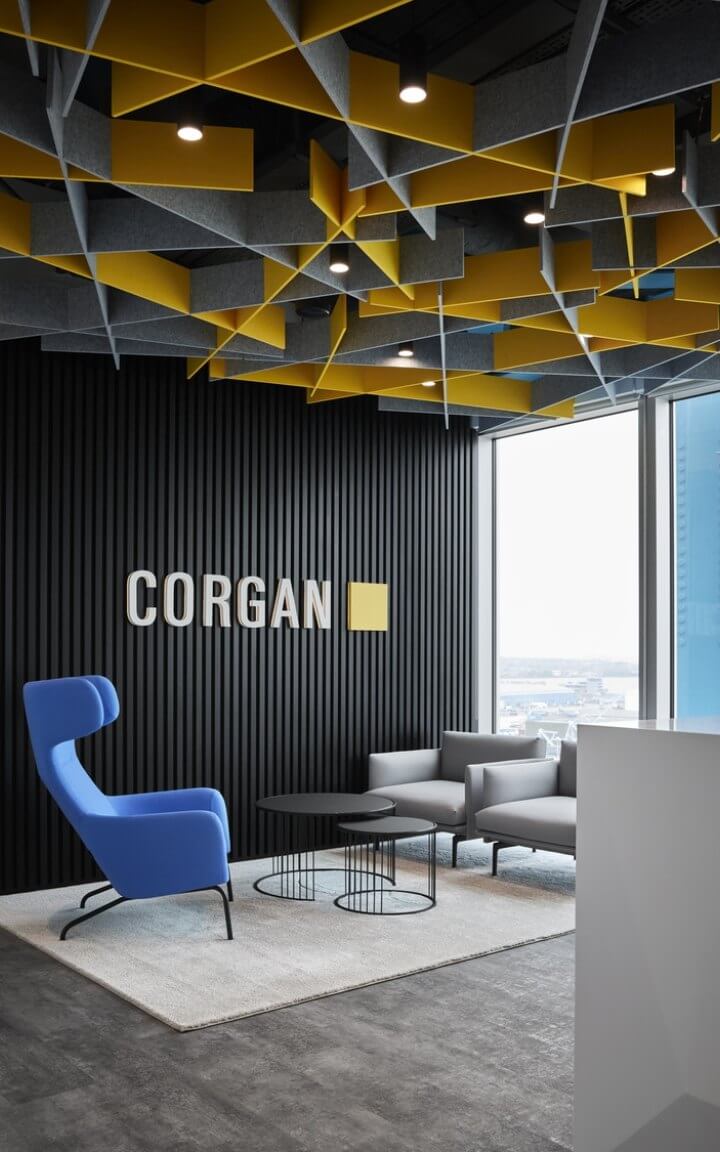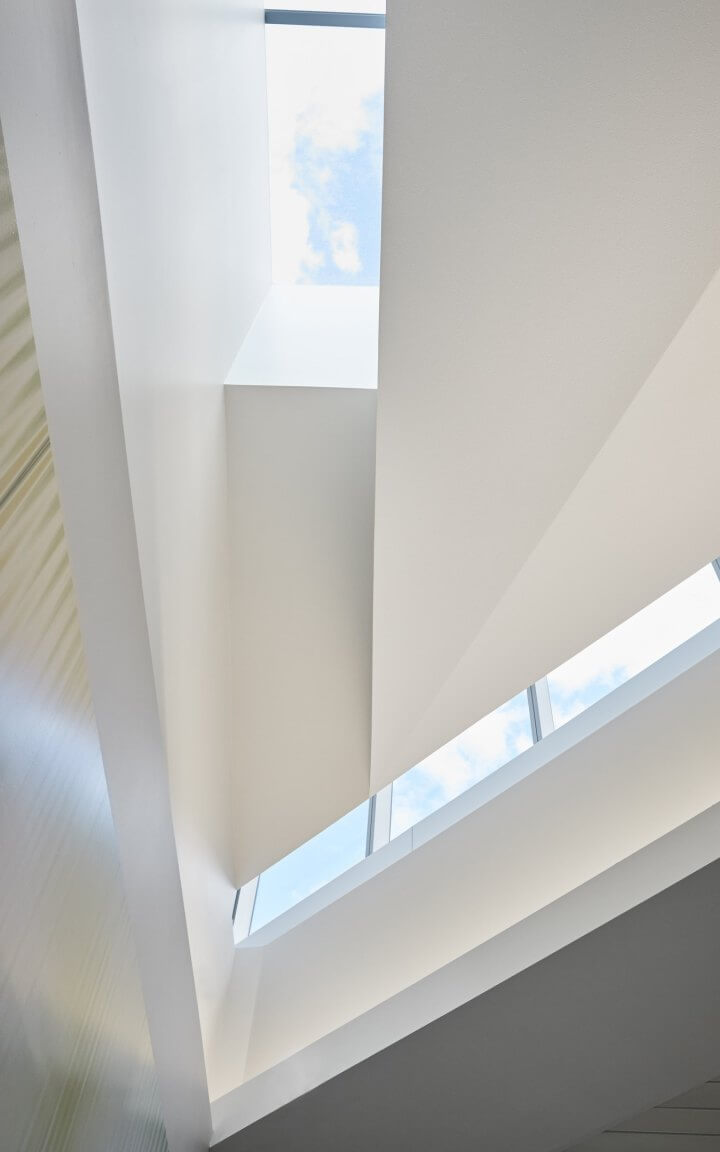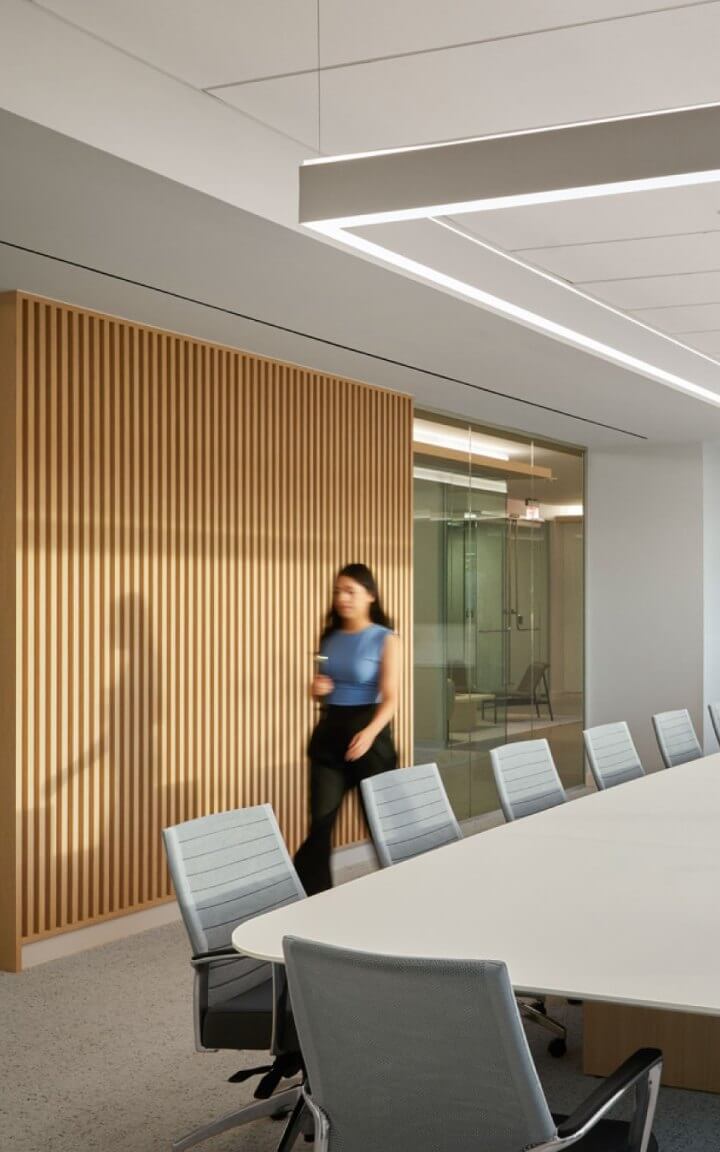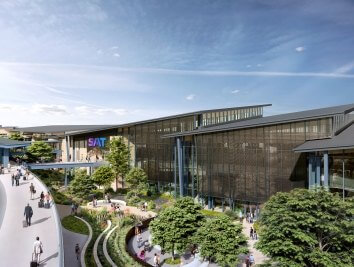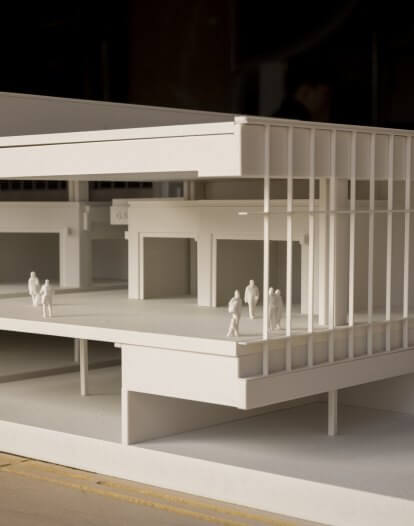St. Maarten International Airport Reconstruction
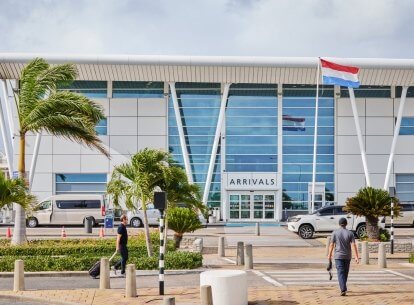
Project Stats
- LOCATION
Simpson Bay, Sint Maarten
- SIZE
30,500 SQ M
- Market
- Expertise
Rebuilding — stronger and smarter
In September 2017, Princess Juliana International Airport (SXM) was significantly damaged and left unusable after hurricanes Irma and Maria. Corgan provided architectural design services for the $110 million reconstruction of the airport serving Sint Maarten in the Dutch Caribbean. The original intent of the reconstruction project was to restore the 30,500-square meter facility to its original pre-hurricane condition as quickly as possible. As the project progressed, the goal became to not just restore but to improve the facility with new technology, more accessible options, and a more resilient structure. The renovation also included the expansion of the mezzanine to make room for an expanded business class lounge and additional office space. As part of the reconstruction efforts, the project included several areas of demolition and expansion that changed over the course of construction.
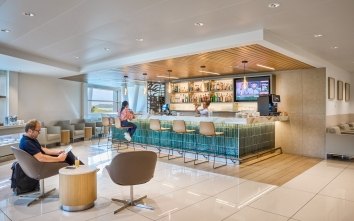
Back to square one
In the immediate aftermath of the hurricanes, the airport erected large tent structures as temporary facilities. This rudimentary solution allowed it to continue operations, but since the tents were not hurricane resistant — and with tourism season quickly approaching — a better solution was needed.
An extensive inventory of the condition of the airport was conducted, and Corgan developed a phased plan. This carefully orchestrated schedule allowed for the concurrent operation of the airport out of interim facilities located in the less damaged parts of the airport while construction was taking place in other areas. The team successfully opened the first interim facility before December 2018, in time for the seasonal rush of tourists visiting the island. For more than five years, the team coordinated with the airport to move the interim facilities around as needed, avoiding impacts to travelers, while the main departures area was being renovated.
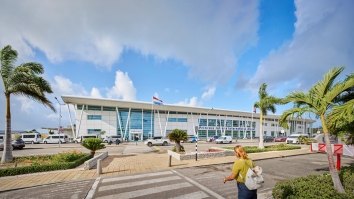
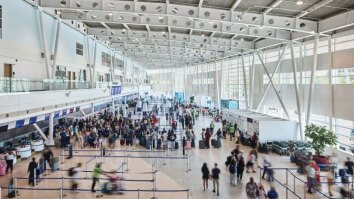
Streamlined and accessible
Due to water damage, the first step of the main facility renovation was mold remediation. Hurricane damage caused contamination of the majority of the building, leading to bio-mitigation, removal, and recycling of the damaged envelope and interiors. Once mitigation efforts were complete, the reconstruction progressed to a complete reskin of the terminal building, reusing the existing structural elements and curtain wall mullions.
The renovation and repair involved enhanced structural, electrical, mechanical, and plumbing systems, as well as life safety upgrades to meet new code changes. To streamline border control, new Automatic Border Control Gates were included in the renovation. These gates use biometric data to save passengers time on their journeys through customs. Additional features include new baggage handling systems and passenger boarding bridges designed to enhance the overall passenger experience. Corgan also provided architectural design for a proposed expansion to add a US Customs and Border Protection (CBP) pre-clearance facility at the airport.
As St. Maarten is a popular destination for older travelers, accessibility a key consideration. To improve the passenger journey — especially for those with limited mobility — the design added escalators at each arrival gate, replacing the previous passenger flow that required walking down a flight of stairs immediately upon arrival. Additionally, each level of the terminal is now served by elevators.

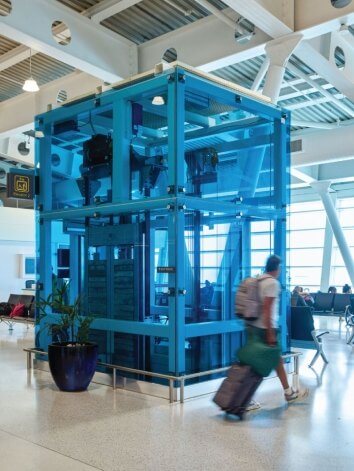

Brighter and bolder
In addition to the structural and facility upgrades, the design team opted to reimagine the interior to include more local character and color. The Caribbean Sea inspired the addition of muted greens and blues to soften the bright white structural elements. Vibrant blue glass elevators enhance circulation routes and serve as intuitive wayfinding landmarks. Custom tile mosaics were added around each bathroom entrance and bright storefronts highlight the concessions and duty-free stores. Natural materials like terrazzo floors and wooden ceilings add texture and interest. At the entrance to the terminal and at the baggage drop, programmable colored lighting highlights key points along the passenger journey.

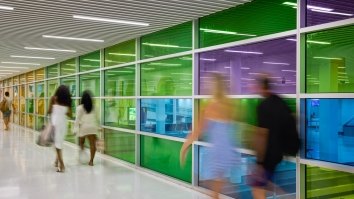
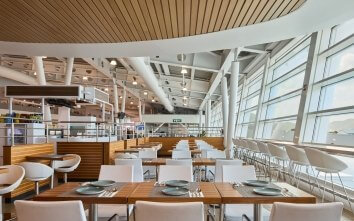
The interior renovation also included improvements to passenger-focused spaces including the business class lounge and a large dining area. The yacht-inspired concession and dining area incorporates wood-look floors, ceilings, and paneling as well as chrome railings and a custom bar with a curved canopy, creating a sense of place within the terminal. The business class lounge was expanded to double its previous size, with two bars on two floors to serve increased demand.
Sustainable and resilient
Sustainability and resiliency were important considerations for the reconstruction. Although the extent of damage exceeded the value of the building, Corgan reused the existing structural system to reduce waste. As an island airport, SXM is particularly vulnerable to increasingly extreme weather. To improve the airport’s resilience, Corgan designed the new facility in excess of the required windspeeds. The team also added stronger and more resilient building entrances and enhanced operational procedures that allow for effective building shut down in advance of severe storms.
The building's design incorporates features to improve energy efficiency and reduce environmental impact. Low-emitting interior finishes were selected to improve indoor air quality by reducing the release of volatile organic compounds (VOCs), which is a key component of creating a healthy and sustainable indoor environment.
High performance glazing was used to maximize natural light while minimizing solar heat gain, which reduces the need for artificial lighting and air conditioning. The exterior insulation helps the building maintain thermal comfort by mitigating the effects of external temperature fluctuations, thereby reducing stress on the HVAC system and improving the building's ability to withstand changing climate conditions. The new HVAC equipment and smart LED lighting systems were added to improve energy efficiency. In addition, the use of low-flow fixtures reduces water consumption. Finally, the inclusion of preconditioned air (PCA) and 400Hz power systems for passenger loading bridges and the potential for roof-mounted solar panels further contribute to significant energy savings.

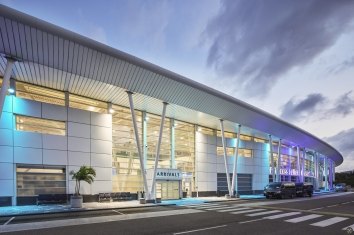
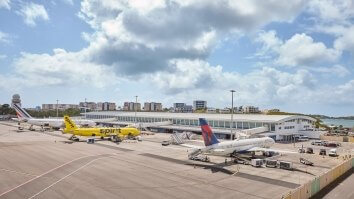
A new beginning
What began as a reconstruction project after a devastating storm turned into an opportunity for SXM to improve its accessibility, passenger technology, and resilience. Through collaboration with airport stakeholders, local architect partners, and the international program management team, the airport opened its interim terminal facilities on time, facilitating the continued operation of the airport during construction. Prior to the hurricanes, SXM was consistently recognized as the “Caribbean Airport of the Year,” including in 2017. After six years of phased renovations, the improved terminal was opened in November 2024, ready to serve the island for decades to come. With the grand opening of the reconstructed terminal, the honor is restored as Princess Juliana International Airport received the 2025 Caribbean Airport of the Year.
